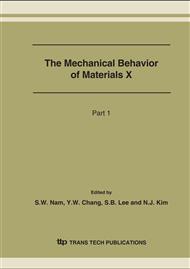p.1157
p.1161
p.1165
p.1169
p.1173
p.1177
p.1181
p.1185
p.1189
A Study on the Measuring Device of Muzzle Velocity Using Magnetic Field Gradient Sensor
Abstract:
In the conventional weapon system, such as gun and small arms, it is a general trend that for maximization of its performance and enhancement of its effectiveness, the fire control system; FCS is developed and applied with the guns and small arms in the world. The FCS of the small arms for infantry man is composed of a few of sensors for acquisition of input data of FCS, such as range measurement, position sensing of weapon, temperature, etc., computer, displayer and power pack, and also the air burst ammunition is developed in parallel for the maximization of effectiveness. Since setting fuse of the flight time for the air burst ammunition is adapted for next rifle, the measuring device of the muzzle velocity is needed to overcome the variation of muzzle velocity due to producing procedures and the differences of the using temperatures and so maintain the burst position accuracy. This paper contained the technical information on the development of the measuring device of muzzle velocity, which designed in compact & light weight configuration with reliability and accuracy.
Info:
Periodical:
Pages:
1173-1176
Citation:
Online since:
August 2007
Authors:
Price:
Сopyright:
© 2007 Trans Tech Publications Ltd. All Rights Reserved
Share:
Citation:


